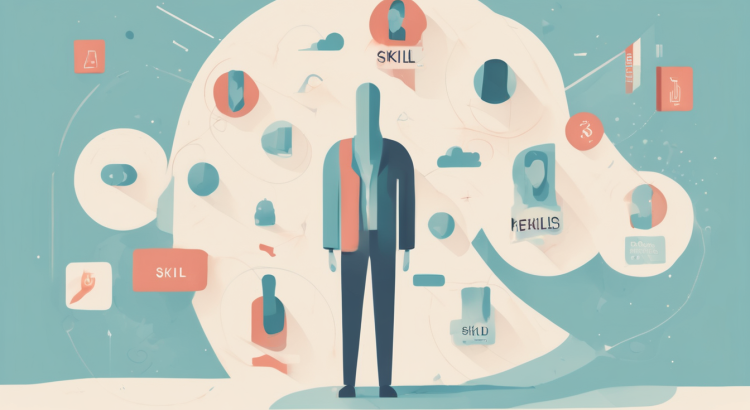Simppler reports that skills-based hiring in 2025 is pushing companies to value proven capabilities above traditional job titles and formal credentials.
Why Skills-Based Hiring in 2025 Is Surging
Recruiters are facing tight talent markets and rapid technology shifts across industries. Skills gaps keep widening as roles evolve faster than academic programs or job titles can track.
As a result, companies increasingly focus on what candidates can actually do. The rise of skills-based hiring in 2025 reflects pressure to fill roles faster, reduce bias, and improve performance.
Job titles often hide the real scope of someone’s experience. Two “managers” may have completely different responsibilities, tools, and outcomes. Skills-based hiring in 2025 helps employers look beyond labels.
The Limits of Traditional Job Titles and Resumes
Traditional resumes rely heavily on job titles, tenure, and prestigious employers. However, those signals rarely show depth of skill, learning speed, or adaptability.
Someone with a junior title can outperform a “senior” employee in core tasks. Skills-based hiring in 2025 allows organizations to discover underutilized talent that titles overlook.
On the other hand, inflated titles can mislead recruiters. “Head of Growth” in a small startup may cover tasks closer to a specialist role. Skills-based hiring in 2025 reduces confusion by focusing on measurable abilities.
Key Pillars of Skills-Based Hiring in 2025
To move away from titles, HR teams are rebuilding hiring frameworks around skills. Several pillars define skills-based hiring in 2025 and keep the process consistent.
- Clear skills taxonomies: Companies map required hard and soft skills for each role.
- Competency levels: Each skill includes levels from basic to expert, with clear behavior examples.
- Evidence-driven assessment: Work samples, tests, and portfolios matter more than job labels.
- Continuous validation: Skills are reassessed as employees complete projects and training.
With these pillars, skills-based hiring in 2025 becomes a structured system instead of a loose buzzword.
How Job Descriptions Are Being Rewritten
Modern job descriptions now highlight key skills, tools, and outcomes instead of long requirement lists. Employers list must-have competencies and nice-to-have capabilities.
Instead of demanding five years in a rigid title, hiring managers define what success looks like in six to twelve months. Skills-based hiring in 2025 translates those outcomes into clear skills expectations.
This change opens doors for career shifters. People from adjacent industries can apply if they show matching skills, even without the “correct” title on their CVs.
Assessment Methods That Replace Title-Based Screening
Companies are investing in better ways to measure ability. Skills-based hiring in 2025 relies on practical testing over assumption-based screening.
- Structured case studies aligned with real job tasks.
- Coding challenges, design briefs, or writing assignments.
- Portfolio reviews with standardized scoring rubrics.
- Behavioral interviews linked to specific competencies.
Read More: How skills-based hiring transforms recruitment and talent management today
These methods reduce bias from prestigious names or inflated positions. With skills-based hiring in 2025, a candidate from a lesser-known company can still win if their work proves stronger.
Diversity, Equity, and Inclusion Gains
Relying less on degrees and titles can significantly improve diversity. Many capable professionals lack access to elite universities or big-brand employers.
Skills-based hiring in 2025 gives alternative pathways for self-taught talent, bootcamp graduates, and community college alumni. Therefore, teams become more socioeconomically diverse.
In addition, structured skills assessments help limit unconscious bias. When every candidate completes the same challenge, evaluation becomes fairer and more transparent.
Impact on Internal Mobility and Career Paths
Skills focus does not stop at recruitment. Internal mobility programs now depend more on verified capabilities than hierarchy alone.
Employees can move sideways into new functions if they demonstrate relevant skills. Skills-based hiring in 2025 blurs rigid ladder-based careers into flexible skill-based journeys.
After that, learning and development strategies also change. HR teams map gaps between current skills and target roles, then design learning paths to close those gaps.
Technology Powering Skills-Based Hiring in 2025
New HR technologies make this transformation practical at scale. Skills-based hiring in 2025 uses AI and analytics to organize large volumes of candidate data.
AI tools extract skills from resumes, portfolios, and public profiles. Matching engines compare those skills with role requirements, offering ranked candidate lists.
Meanwhile, assessment platforms host standardized tasks and automatically score submissions. Recruiters spend more time interpreting results and less time scanning titles line by line.
Practical Steps for Companies Shifting Their Approach
Organizations interested in skills-based hiring in 2025 can start with incremental steps. They do not need to rebuild every process overnight.
- Redesign a few priority roles with clear skills and outcomes.
- Introduce at least one standardized skills assessment per role.
- Train hiring managers to interview around competencies, not pedigree.
- Track performance to validate which skills predict success.
On the other hand, companies must communicate changes clearly to both recruiters and candidates. Transparent expectations encourage better applications and reduce confusion.
The Future of Careers When Titles Matter Less
As organizations deepen their focus on capabilities, careers will center more on demonstrable strengths. This shift means people can redefine their paths multiple times.
Professionals will document projects, outcomes, and skills instead of depending on a single linear ladder. Skills-based hiring in 2025 accelerates this change and rewards continuous learning.
In the long run, skills-based hiring in 2025 is likely to outlast yearly trends, shaping more flexible, inclusive, and high-performance workplaces where job titles no longer limit opportunity.



